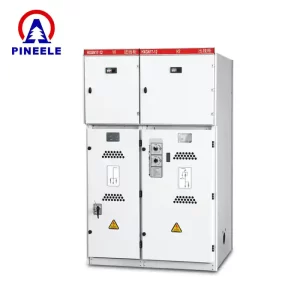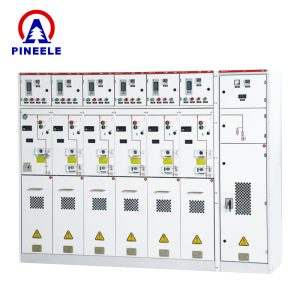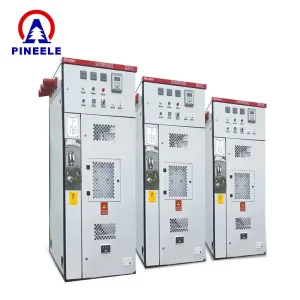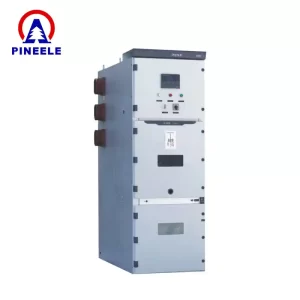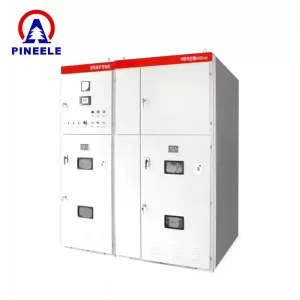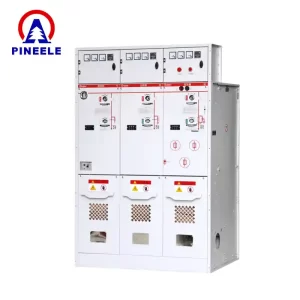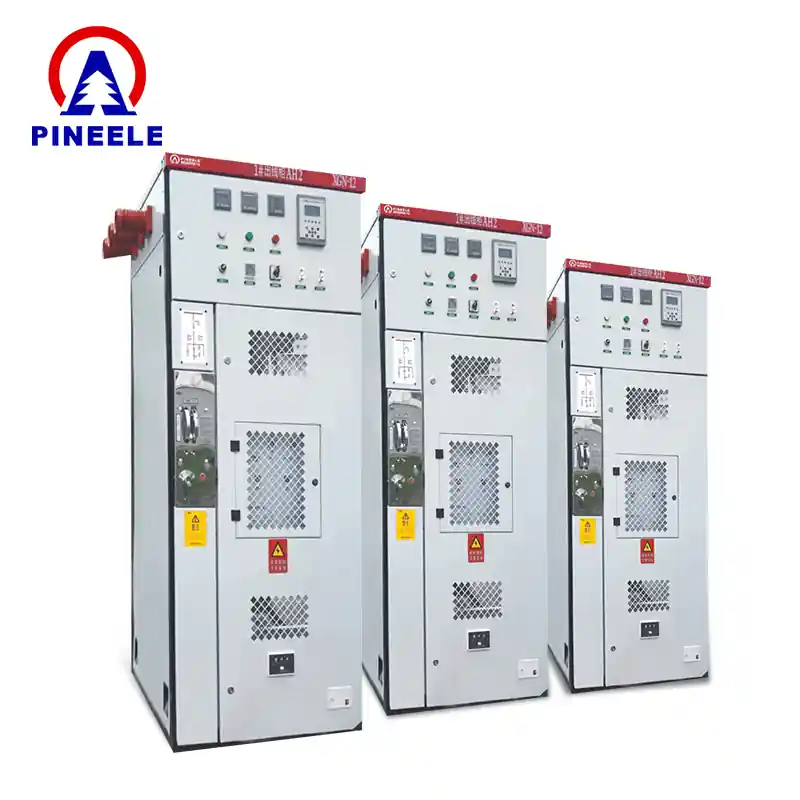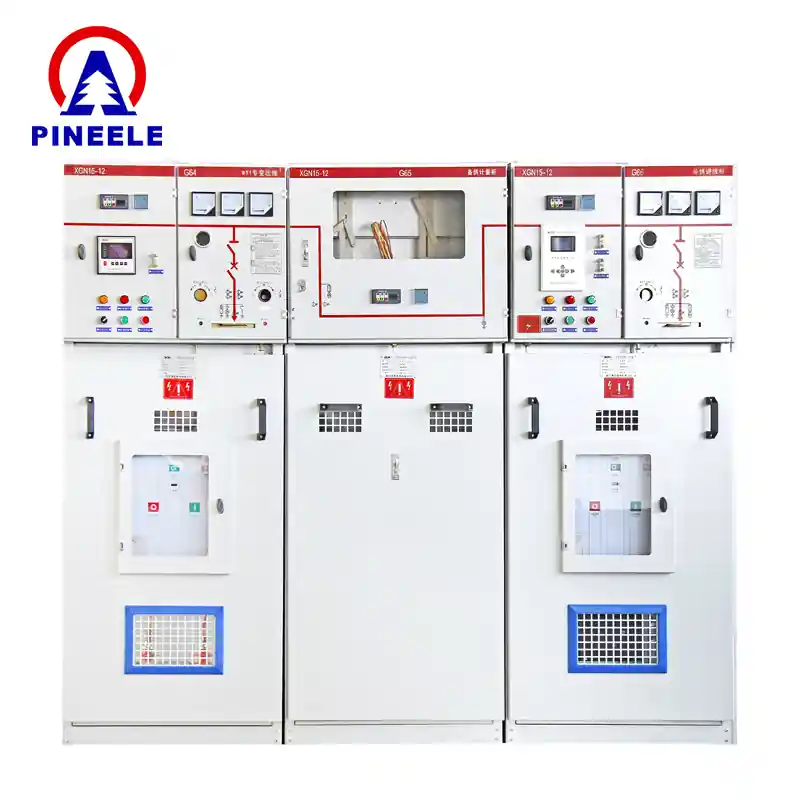
High Voltage Switchgear
High Voltage Switchgear is an essential component of modern electrical power systems, providing safe and efficient control, protection, and isolation of high-voltage circuits. It is widely used in power generation, transmission, and distribution networks to ensure the reliable operation of electrical grids. These switchgear systems are designed to handle medium to high voltages, typically ranging from 3.6kV to 40.5kV in distribution systems and up to 800kV in transmission networks.
Features and Functions
- Power Distribution: High voltage switchgear plays a crucial role in distributing electricity from power plants to substations and end users.
- Fault Protection: Equipped with circuit breakers, relays, and protective devices to prevent electrical faults such as short circuits and overloads.
- Isolation and Safety: Ensures safe maintenance and operation by isolating faulty sections of the electrical network.
- Remote Monitoring: Modern switchgear incorporates digital control and monitoring systems for improved efficiency and automation.
Types of High Voltage Switchgear
- Air-Insulated Switchgear (AIS): Uses air as the insulating medium and is widely used in outdoor substations.
- Gas-Insulated Switchgear (GIS): Compact and enclosed switchgear using SF6 gas insulation, ideal for space-constrained applications.
- Hybrid Switchgear: A combination of AIS and GIS, providing a balance of cost-effectiveness and space efficiency.
High Voltage Distribution Switchgear
High Voltage Distribution Switchgear is an essential component in power distribution systems, designed to control, protect, and isolate electrical equipment in high-voltage networks. It is widely used in industrial plants, power utilities, renewable energy facilities, and large commercial buildings to ensure safe and efficient electricity distribution.
This switchgear is engineered to handle voltages typically ranging from 3.3kV to 36kV, providing reliable circuit control, fault isolation, and system stability. It is available in different configurations, including air-insulated switchgear (AIS), gas-insulated switchgear (GIS), and hybrid switchgear, each offering unique advantages depending on the application requirements.
Key Features and Benefits
- Enhanced Safety: Equipped with advanced protection mechanisms such as circuit breakers, relays, and grounding systems to prevent electrical hazards and short circuits.
- Compact and Modular Design: Available in compact configurations, making it suitable for space-constrained installations while allowing future expansions.
- Reliable Performance: Designed to operate under harsh environmental conditions, ensuring stable power distribution with minimal maintenance.
- Energy Efficiency: Reduces power losses and improves overall system efficiency by minimizing transmission and distribution disruptions.
- Remote Monitoring and Automation: Many high-voltage switchgear systems integrate smart monitoring and automation technologies, enabling real-time fault detection and remote operation.
Applications of High Voltage Distribution Switchgear
- Power Plants and Substations: Used in transmission and distribution networks to regulate electricity flow and ensure system stability.
- Industrial Facilities: Essential for large-scale manufacturing plants, refineries, and processing units to manage high-power loads.
- Renewable Energy Projects: Integrated into wind farms and solar power plants to handle grid connections and energy transmission.
- Commercial and Residential Infrastructure: Provides reliable electricity distribution in urban buildings, shopping malls, and residential complexes.
High Voltage Distribution Switchgear is an integral part of modern power systems, offering a combination of safety, efficiency, and advanced technological capabilities. With its ability to ensure seamless power distribution and fault protection, it plays a crucial role in maintaining the stability of electrical networks worldwide.
What is a High-Voltage Switchgear?
High-voltage switchgear is an essential electrical device used in power distribution networks to control, protect, and isolate electrical circuits and equipment. It operates at voltage levels typically above 3.3kV and up to 36kV or higher, ensuring the safe and efficient operation of power transmission and distribution systems.
Switchgear consists of various components such as circuit breakers, disconnect switches, relays, surge arresters, and protective relays, which work together to manage the flow of electricity and prevent system failures. These devices are used in power plants, substations, industrial facilities, and commercial infrastructures to ensure uninterrupted power supply and protect electrical equipment from faults.
There are different types of high-voltage switchgear, including:
- Air-Insulated Switchgear (AIS): Uses air as the primary insulation medium and is commonly used in outdoor installations.
- Gas-Insulated Switchgear (GIS): Uses SF6 gas for insulation, offering a compact design suitable for high-voltage networks in urban areas.
- Hybrid Switchgear: A combination of AIS and GIS, providing a balance between space efficiency and cost-effectiveness.
High-voltage switchgear plays a crucial role in modern electrical infrastructure, ensuring that power distribution remains safe, efficient, and reliable.
What is the Function of High-Voltage Switchgear?
The primary function of high-voltage switchgear is to regulate, protect, and distribute electricity efficiently while preventing electrical faults and ensuring the safety of the power grid. Below are some of its key functions:
- Electrical Protection: High-voltage switchgear safeguards power systems by detecting and isolating faults such as short circuits, overloads, and voltage fluctuations, preventing damage to transformers and other equipment.
- Power Distribution: It controls the routing of electrical power from power plants to substations and end-users, ensuring smooth and uninterrupted energy flow.
- Fault Isolation and Recovery: When a fault occurs, switchgear isolates the affected section while allowing the rest of the system to function normally, reducing downtime and improving network stability.
- Load Management: High-voltage switchgear helps balance power distribution by managing multiple circuits and loads efficiently, preventing system overloading.
- Safety Enhancement: By providing insulation, arc containment, and grounding mechanisms, switchgear ensures operator and equipment safety in high-voltage environments.
- Remote Monitoring and Automation: Many modern switchgear systems integrate smart grid technology, allowing real-time monitoring, remote operation, and automated fault detection for improved efficiency.
High-voltage switchgear is an indispensable component of modern electrical networks, offering protection, efficiency, and control in power transmission and distribution systems. Its ability to ensure uninterrupted power supply and safeguard equipment makes it a vital part of industrial, commercial, and utility applications.
Product Details
| Type Description | |
|---|---|
| X | Indoor Installation - Designed for use in controlled indoor environments to protect against external conditions. |
| G | Fixed Type - A non-movable structure ensuring stability and long-term reliability. |
| N | Cabinet-type Switchgear - Compact, self-contained design that integrates switching and protection components. |
| 2 | Rated Voltage 12KV - Suitable for medium-voltage applications with high operational safety. |
| T | Spring Operating Mechanism - Ensures efficient and smooth switching operations. |
| D | Electromagnetic Operating Mechanism - Provides precise and reliable operation for circuit control. |
| S | Oil Type (or Not Marked) - Traditional insulation and cooling method for switchgear components. |
| Z | Vacuum - Uses vacuum technology for arc extinction, enhancing operational efficiency. |
| F | SF6 Gas - A gas-insulated switchgear option for compact and high-performance applications. |
Usage Conditions
- Environmental Temperature: The system operates effectively within a temperature range of maximum +40°C and minimum -5°C, ensuring functionality in various climatic conditions.
- Altitude: The switchgear is designed to function at altitudes not exceeding 1000m, with special configurations available for higher elevations.
- Relative Humidity: The daily average should not exceed 95%, while the monthly average should not exceed 90%, preventing condensation-related failures.
- Seismic Intensity: The switchgear is designed to withstand earthquakes of up to level 8 on the Richter scale, making it suitable for installation in seismically active regions.
- Environmental Restrictions: The unit should not be installed in areas prone to fire hazards, explosive risks, heavy pollution, chemical corrosion, or severe mechanical vibrations.
- Special Conditions: For installations exceeding the specified environmental conditions, users should consult with the manufacturer to customize a solution.
Included Documents
- Product Certificate: Ensures compliance with industry regulations and standards, verifying product quality and safety.
- Installation and User Manual: Provides detailed instructions for setting up, operating, and maintaining the switchgear.
- Secondary Construction Wiring Diagram: A schematic guide detailing the connection and integration of electrical components.
- Packing List: A comprehensive list of all included components and accessories for verification upon receipt.
Spare Parts & Accessories
- Consumable Parts: Includes components such as circuit breakers, fuses, and contactors that may need replacement over time.
- Wear and Tear Parts: Certain parts of the switchgear are susceptible to aging and damage. Users and manufacturers should determine necessary replacements based on operational conditions.
- Additional & Optional Accessories: A variety of enhancement components, such as remote monitoring systems and advanced protective relays, are available upon request.
Order Requirements
- Main Circuit Schematic & Single-Line Diagram: The user should provide a detailed diagram outlining the intended circuit configuration for proper customization.
- Secondary Circuit Wiring Principle & Terminal Arrangement: This includes control and monitoring connections, ensuring compatibility with the existing power network.
- Specifications & Quantities of Electrical Components: The user must specify the types, ratings, and numbers of required circuit breakers, contactors, and relays.
- Busbar & Structural Support Material: The selection of busbar materials, including copper or aluminum, should align with project requirements.
- Special Operational Conditions: If the installation environment demands unique adaptations, such as extreme temperature resistance, it should be noted in advance.
- Accessories & Spare Parts: Users should list additional spare parts needed for future maintenance and troubleshooting, specifying their type and quantity.
High Voltage Gas-Insulated Switchgear: Advanced Power Distribution Solution
High Voltage Switchgear plays a crucial role in modern power distribution systems, ensuring the safe and efficient control of electrical networks. Among its various types, High Voltage Gas-Insulated Switchgear (GIS) stands out as an innovative and space-saving solution designed for high-performance power management.
Unlike conventional air-insulated switchgear, GIS utilizes a sealed environment filled with insulating gas, such as SF6, to enhance electrical insulation and arc-quenching properties. This design minimizes maintenance requirements, reduces space consumption, and improves overall system reliability. As a result, GIS is widely used in urban substations, industrial plants, renewable energy projects, and high-voltage transmission networks.
One of the key advantages of High Voltage Gas-Insulated Switchgear is its ability to operate efficiently in harsh environmental conditions, including high humidity, extreme temperatures, and contaminated areas. Its enclosed design prevents dust, moisture, and external pollutants from affecting its performance, making it ideal for both indoor and outdoor applications.
With advancements in smart grid technology, modern GIS solutions integrate digital monitoring and remote control capabilities, enabling real-time diagnostics, predictive maintenance, and enhanced operational efficiency. As the demand for reliable power distribution continues to grow, GIS is becoming an essential component in achieving sustainable and resilient electrical infrastructure.
For industries and utilities seeking high-performance, space-saving, and low-maintenance switchgear solutions, High Voltage Gas-Insulated Switchgear remains a preferred choice. Its superior insulation, compact design, and high fault tolerance make it a valuable asset in modern electrical networks.
